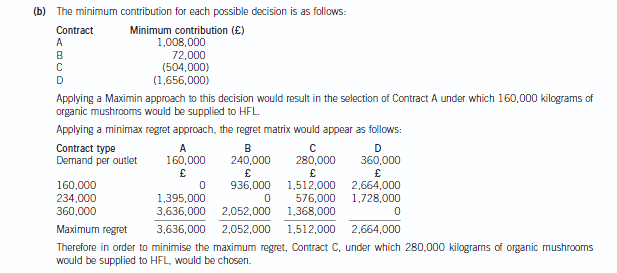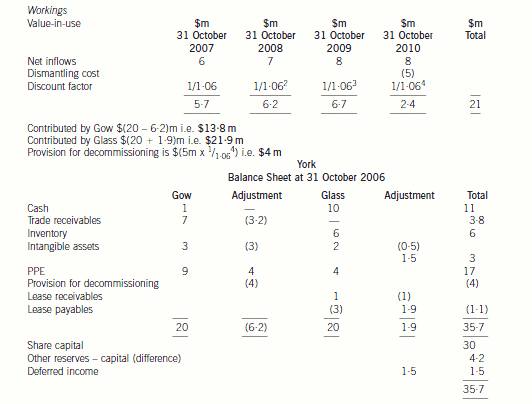天府英才计划的住房安居政策你了解吗?
发布时间:2020-04-19
四川成都天府英才计划的住房安居政策你了解吗?我们一起来看看吧!
成都天府新区成都直管区召开发布会,重磅推出成都《天府新区成都直管区“天府英才计划”实施办法》计划中指出,55周岁以下,近5年取得ACCA专业资格证书,且在直管区注册的金融机构担任高级管理职务两年以上的财会人可以直接申请成为B类高端人才。按照“天府英才计划”,高端人才B类可以获得高达80万的落户安家补贴,医疗,子女入学等优惠福利。
看了成都的政策,再来看看其他地区ACCA人才福利政策吧!
一、西安:西安高新区“五八八二”三次创业战略列为“积极吸引高端金融人才”,根据西安公布的《西安市加快金融业发展的若干扶持办法》中,明确将ACCA人才列为“具备国际资质的高端金融人才”,获得ACCA专业资质的金融从业人员,给予每人最高50万元的工作生活补贴。
二、珠海:珠海宣布出台《关于实施“珠海英才计划”加快集聚新时代创新创业人才的若干措施》,新政提到珠海每年将为人才引进投入25亿,提供福利包括落户补贴,住房产权,医疗,子女入学等一系列优惠。在珠海出台的人才引进政策中,ACCA人才作为获得国际权威资格认证证书的金融审计师,被列入《珠海市紧缺人才开发目录》当中,持有ACCA证书的财务人,一旦落户珠海,可以直接获得20万落户补贴。对于被评定为高端稀缺人才的,补贴额度还会更高。
三、重庆:重庆市渝北区印发了《大力实施创新驱动发展战略加快建设创新生态圈的若干政策》及相关配套文件,落实引进临空创新人才。购房补贴ACCA被列入临空创新人才目录,最高可获200万元项目资金,60万元人才补贴,25万元一次性购房补贴。临空创新人才及其配偶、子女户口可随调随迁。人才补贴文件中明确指出,将国际权威的职业资格认证ACCA列入临空经营管理B类及C类人才目录,分别享60万元和10万元人才补贴及其他优惠政策。
四、上海:已办理上海居住证的ACCA持证人,凭ACCA证书可获得落户30积分,此外,对于想去会计师事务所的ACCA持证人,可根据《上海市注册会计师协会行业人才管理培养办法》获得10,000元奖励。
五、广州:ACCA持证人可享受广州市政府提供的安家补贴,具体数额为最高不超过100万元,非广州户籍的金融人才和配偶,子女,可在购房、购车、子女入学等方面享受广州市民同等待遇,在落户上享受优先办理。此外,深圳市罗湖区制定和实施高层次产业人才“精英计划”对三类“精英人才”实行不同的人才待遇标准,其中把国际职业资格——ACCA列入B类“精英人才”认定标准。提供住房安居、创业支持、健康管理、研修资助、联谊交流、子女入学、父母养老等服务。
六、杭州:本科学历的ACCA持证人交满连续一年社保后就可申请落户!在省内事务所工作满三年期间,未受任何处罚,考取ACCA等相关境外资格的奖励3000元。
七、北京:在京发展的16项政策中指出,加强对高端金融人才ACCA等在引进住房保障医疗健康、教育培训、子女入学等方面的服务。不仅在个人所得税方面给予优惠,还可以办理调京手续,办理本市户口,并落户积分优惠。
八、天津:天津市人民政府办公厅发布《关于支持金融机构和金融人才在津发展的政策措施》,明确提到,具有国际资格认证证书且在金融行业从业5年以上的人才,或者金融机构引进的当年收入超过本市职工平均工资10倍的人才都算金融高端人才。而在国际资格认证证书中,ACCA赫然在列。持有ACCA的金融人才,在天津可以获得至少“海河精英绿卡+奖励”两项福利
九、深圳:是伴随改革开放而崛起的新一代一线城市。因为深交所的存在,深圳也成为金融产业聚集地,每年金融产业GDP贡献达数千亿。深圳罗湖区于2016年发布的《深圳市罗湖区“精英人才”认定办法》中将同时满足其他附加条件的ACCA持证人认定为B类“精英人才”。
好了,以上就是国内多地的ACCA人才福利政策,看了上面的内容,相信小伙伴也有了更多的了解。如果还想了解其他信息,欢迎来51题库考试学习网留言。
下面小编为大家准备了 ACCA考试 的相关考题,供大家学习参考。
(b) (i) Advise the directors of GWCC on specific actions which may be considered in order to improve the
estimated return on their investment of £1,900,000. (8 marks)
(b) (i) The directors of GWCC might consider any of the following specific actions in order to improve the return on the
investment:
– Attempt to raise the selling price of the Mighty Ben cake to Superstores plc. Much will depend on the nature of the
relationship in terms of mutuality of trust and co-operation between the parties. If Superstores plc are insistent on
a launch price of £20·25 and a mark-up of 35% on its purchase price from GWCC then this is likely to be
unsuccessful.
– Attempt to reduce the material losses in the first 600 batches of production via improved process control.
– Attempt to negotiate a retrospective rebate based on volumes of packaging purchased.
– Improve the rate of learning of the hand-skilled cake decorators via a more intensive training programme and/or
altering the flow of production.
– Undertake a thorough review of all variable overheads which have been absorbed on the basis of direct labour
hours. It might well be the case that labour is not the only ‘cost driver’ in which case variable overheads might be
overstated.
– Undertake a thorough review of all fixed overheads to ensure that they are specific to the production of the Mighty
Ben cake.
– Adopt a ‘value engineering’ approach in order to identify ‘non value added’ features/aspects of the product or
processes used to produce it. This would have to be done in conjunction with Superstores plc, but might end in a
‘win-win’ scenario.
– Ensure that all overhead expenditure will be incurred in the most ‘economic’ manner.
(b) Determine whether your decision in (a) would change if you were to use each of the Maximin and Minimax
regret decision criteria.
Your answer should be supported by relevant workings. (6 marks)

(b) Prepare the balance sheet of York at 31 October 2006, using International Financial Reporting Standards,
discussing the nature of the accounting treatments selected, the adjustments made and the values placed
on the items in the balance sheet. (20 marks)

Gow’s net assets
IAS36 ‘Impairment of Assets’, sets out the events that might indicate that an asset is impaired. These circumstances include
external events such as the decline in the market value of an asset and internal events such as a reduction in the cash flows
to be generated from an asset or cash generating unit. The loss of the only customer of a cash generating unit (power station)
would be an indication of the possible impairment of the cash generating unit. Therefore, the power station will have to be
impairment tested.
The recoverable amount will have to be determined and compared to the value given to the asset on the setting up of the
joint venture. The recoverable amount is the higher of the cash generating unit’s fair value less costs to sell, and its value-inuse.
The fair value less costs to sell will be $15 million which is the offer for the purchase of the power station ($16 million)
less the costs to sell ($1 million). The value-in-use is the discounted value of the future cash flows expected to arise from the
cash generating unit. The future dismantling costs should be provided for as it has been agreed with the government that it
will be dismantled. The cost should be included in the future cash flows for the purpose of calculating value-in-use and
provided for in the financial statements and the cost added to the property, plant and equipment ($4 million ($5m/1·064)).
The value-in-use based on a discount rate of 6 per cent is $21 million (working). Therefore, the recoverable amount is
$21 million which is higher than the carrying value of the cash generating unit ($20 million) and, therefore, the value of the
cash generating unit is not impaired when compared to the present carrying value of $20 million (value before impairment
test).
Additionally IAS39, ‘Financial Instruments: recognition and measurement’, says that an entity must assess at each balance
sheet date whether a financial asset is impaired. In this case the receivable of $7 million is likely to be impaired as Race is
going into administration. The present value of the estimated future cash flows will be calculated. Normally cash receipts from
trade receivables will not be discounted but because the amounts are not likely to be received for a year then the anticipated
cash payment is 80% of ($5 million × 1/1·06), i.e. $3·8 million. Thus a provision for the impairment of the trade receivables
of $3·2 million should be made. The intangible asset of $3 million would be valueless as the contract has been terminated.
Glass’s Net Assets
The leased property continues to be accounted for as property, plant and equipment and the carrying amount will not be
adjusted. However, the remaining useful life of the property will be revised to reflect the shorter term. Thus the property will
be depreciated at $2 million per annum over the next two years. The change to the depreciation period is applied prospectively
not retrospectively. The lease liability must be assessed under IAS39 in order to determine whether it constitutes a
de-recognition of a financial liability. As the change is a modification of the lease and not an extinguishment, the lease liability
would not be derecognised. The lease liability will be adjusted for the one off payment of $1 million and re-measured to the
present value of the revised future cash flows. That is $0·6 million/1·07 + $0·6 million/(1·07 × 1·07) i.e. $1·1 million. The
adjustment to the lease liability would normally be recognised in profit or loss but in this case it will affect the net capital
contributed by Glass.
The termination cost of the contract cannot be treated as an intangible asset. It is similar to redundancy costs paid to terminate
a contract of employment. It represents compensation for the loss of future income for the agency. Therefore it must be
removed from the balance sheet of York. The recognition criteria for an intangible asset require that there should be probable
future economic benefits flowing to York and the cost can be measured reliably. The latter criterion is met but the first criterion
is not. The cost of gaining future customers is not linked to this compensation.
IAS18 ‘Revenue’ contains a concept of a ‘multiple element’ arrangement. This is a contract which contains two or more
elements which are in substance separate and are separately identifiable. In other words, the two elements can operate
independently from each other. In this case, the contract with the overseas company has two distinct elements. There is a
contract not to supply gas to any other customer in the country and there is a contract to sell gas at fair value to the overseas
company. The contract has not been fulfilled as yet and therefore the payment of $1·5 million should not be taken to profit
or loss in its entirety at the first opportunity. The non supply of gas to customers in that country occurs over the four year
period of the contract and therefore the payment should be recognised over that period. Therefore the amount should be
shown as deferred income and not as a deduction from intangible assets. The revenue on the sale of gas will be recognised
as normal according to IAS18.
There may be an issue over the value of the net assets being contributed. The net assets contributed by Glass amount to
$21·9 million whereas those contributed by Gow only total $13·8 million after taking into account any adjustments required
by IFRS. The joint venturers have equal shareholding in York but no formal written agreements, thus problems may arise ifGlass feels that the contributions to the joint venture are unequal.

(c) At a recent meeting of the board of directors, the managing director of Envico Ltd said that he considered it
essential to be able to assess the ‘value for money’ of each seminar. He suggested that the quality of the speakers
and the comfort of the seminar rooms were two assessment criteria that should be used in order to assess the
‘value for money’ of each seminar.
Required:
Discuss SIX separate and distinct assessment criteria (including those suggested by the managing director),
that would enable the management of Envico Ltd to assess the ‘value for money’ of each seminar.
(6 marks)
(c) The following are six separate and distinct assessment criteria (including those suggested by the managing director), that
would enable the management of Envico Ltd to assess the ‘value for money’ of each seminar. The assessment criteria are
presented as questions that would comprise the contents of a questionnaire but other presentations would have been equally
acceptable.
(1) Did the course meet your objectives?
‘Value for money’ may, in part, be assessed by reference to the ‘effectiveness’ of the service provision. Effectiveness may
be viewed in this context as meeting the objectives of attendees. All attendees have similar but varying objectives and
hence it is vital that Envico Ltd meets the objectives of all attendees if seminars are to constitute ‘value for money’.
(2) How would you rate the quality of the speakers?
A primary resource of Envico Ltd is its speakers and thus it is important to gauge how they were perceived to perform
by the attendees.
(3) How would you rate comfort, cleanliness and facilities of the seminar rooms?
Again, a principal resource, which is consumed when providing the service, is the seminar room and the facilities
contained within it. Attendees will find a clean and ergonomically designed room more conducive for education and
training activities.
(4) How would you assess the quality of the course materials?
Since Envico Ltd undertakes the provision of educational and training seminars then the quality of course materials
provided assumes critical significance as they represent the ‘raison d’être’ of Envico Ltd. If they are perceived to be of
high quality they may act as a good advertisement for the company. Conversely, poor quality course materials will cause
Envico Ltd to be perceived poorly.
(5) How strongly would you recommend Envico courses to friends and colleagues?
This is a very important consideration since ‘word of mouth’ may represent the best means of advertising the services
provided by Envico Ltd and is indicative of whether attendees consider that they have received ‘value for money’ from
Envico Ltd.
(6) Do you consider that you could have achieved your objectives in attending the course in a more expedient manner? If
so, please detail below.
This question acknowledges that the time of attendees is a scarce resource and hence there may well be an opportunity
cost in attending seminars in addition to the explicit costs such as course fees, travel and subsistence costs etc. It is
essential that Envico Ltd is flexible in its approach to meeting the needs of clients where attendance at seminars is either
impracticable or undesirable. Perhaps a series of interactive CDs and/or video tuition may be more appropriate in certain
instances.
声明:本文内容由互联网用户自发贡献自行上传,本网站不拥有所有权,未作人工编辑处理,也不承担相关法律责任。如果您发现有涉嫌版权的内容,欢迎发送邮件至:contact@51tk.com 进行举报,并提供相关证据,工作人员会在5个工作日内联系你,一经查实,本站将立刻删除涉嫌侵权内容。
- 2020-01-09
- 2020-01-09
- 2019-12-27
- 2020-02-02
- 2019-12-28
- 2020-01-09
- 2020-05-09
- 2020-01-09
- 2019-12-30
- 2020-01-31
- 2020-05-12
- 2020-01-09
- 2020-05-03
- 2020-05-16
- 2020-02-04
- 2020-02-04
- 2020-03-28
- 2020-02-21
- 2020-01-10
- 2020-01-09
- 2020-05-02
- 2020-01-09
- 2020-01-09
- 2020-04-12
- 2020-03-14
- 2020-02-14
- 2020-02-27
- 2020-01-09
- 2020-05-14
- 2020-01-09